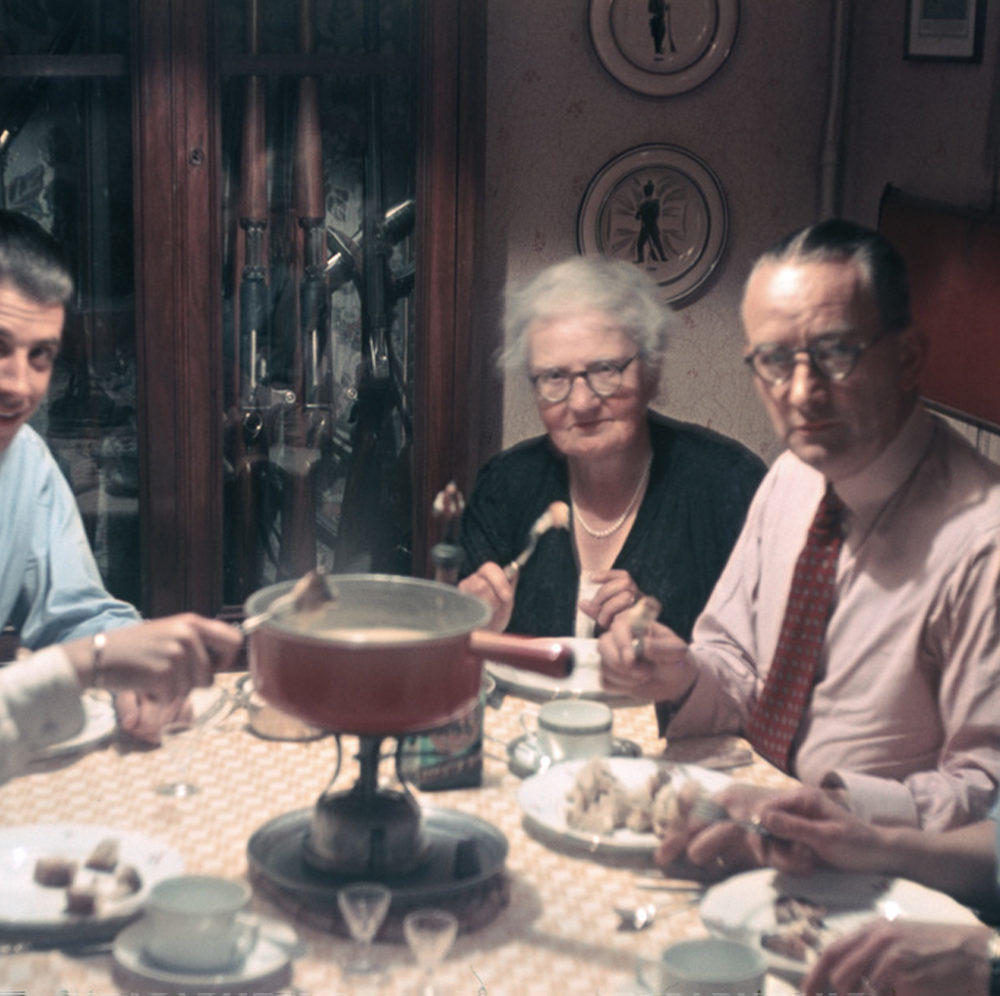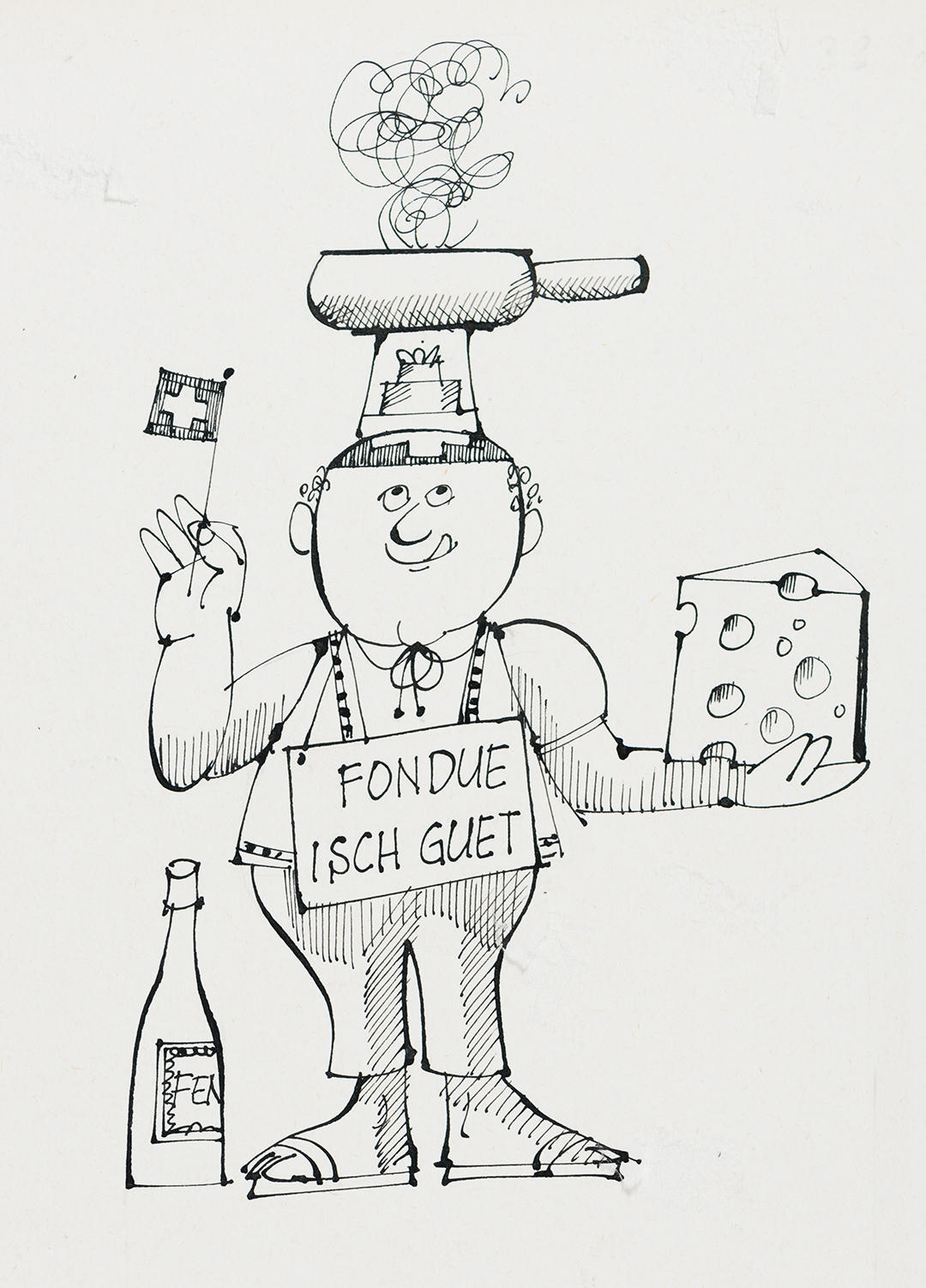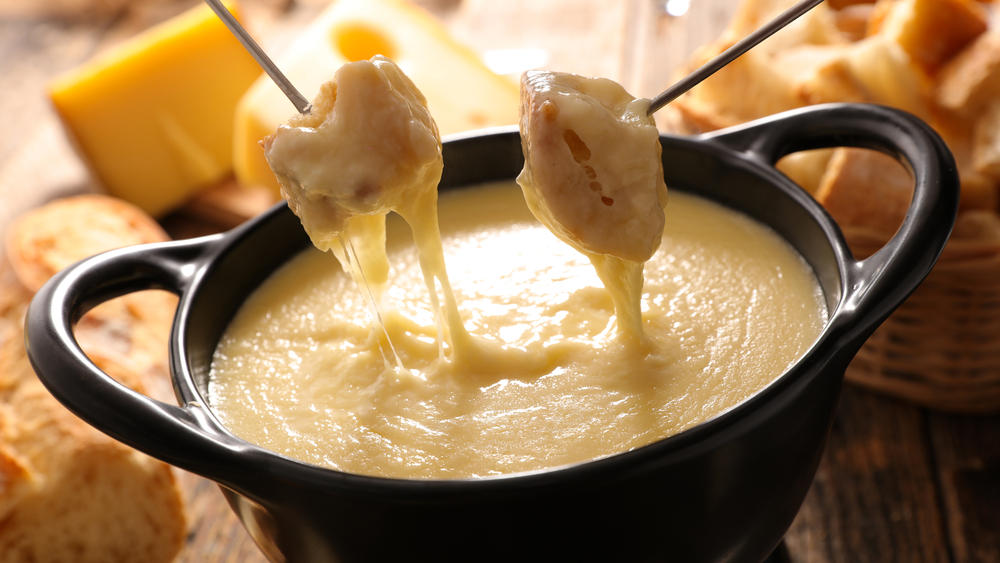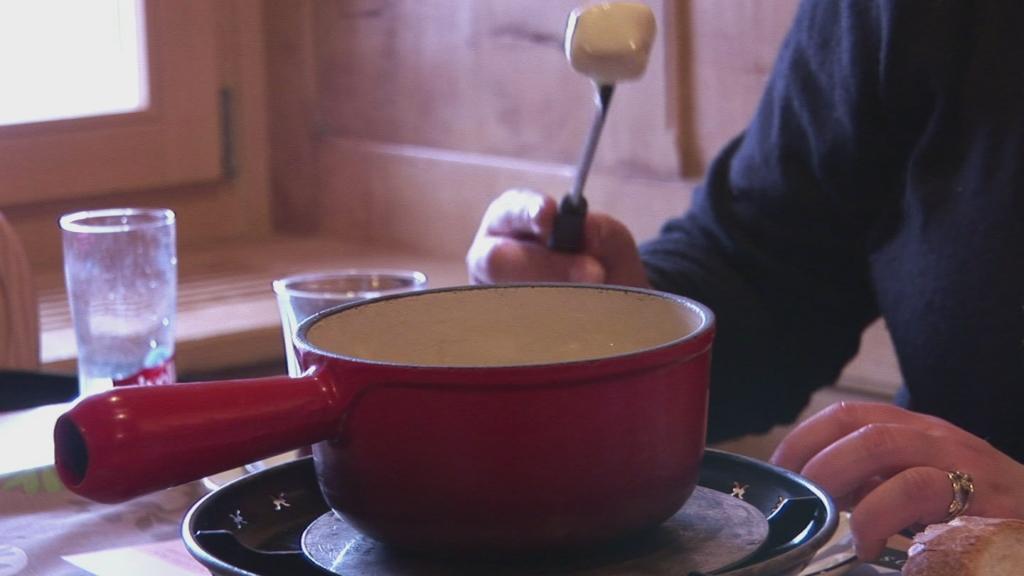Fondue – a ‘natural processed product’

Until the Second World War, fondue was unheard of in most areas of Switzerland. The cheese speciality only became the “national dish” as the result of a marketing campaign run by the Swiss Cheese Union.
Until the 20th century, people only knew about cheese fondue in areas where cows were kept. For a long time it was prepared with milk, not wine. However, melted cheese has always been one of the main ingredients of fondue. Even in Switzerland, cheese has only really become a staple food in the last 100 years or so, and prior to that most consumers knew nothing at all about fondue. In German-speaking Switzerland, it only really became popular after the Second World War when, like so much else in our consumer society, cheese was plentiful.
SWI swissinfo.ch regularly publishes articles from the Swiss National Museum blogExternal link devoted to historical topics. The articles are always written in German and usually also in French and English.
Switzerland was first hit by “cheese fever” in the 19th century. Up to that time, hard cheese could only be produced in summer on the Alps, because that was the only location where there was pasturage for herds big enough to supply sufficient milk to make hard cheese.
Thanks to the improvement in basic feed provision during the first agrarian revolution and the growing demand for cheese abroad, in the second quarter of the 19th century farmers in the country’s higher-altitude Mittelland organised themselves into dairy cooperatives and processed the raw milk from their cows into full-fat hard cheese. After tending and ripening in heated cheese cellars, the rounds of cheese, weighing up to 100 kilos, were sold mainly to international cheesemongers. These exporters then supplied the cheeses primarily to retailers in the cities of Europe and North America, where the hard cheese was bought mostly by kitchen staff serving in middle-class households.
In Switzerland, the expansion of cheese production provided a boost to the entire national economy. The revenue directly linked to milk sales resulted in an ongoing demand by farmers for commercial and industrial products. This supported the growth of trade and industry and the involvement of cheesemongers in the newly emerging trade and industry associations, and of farmers in the agricultural cooperatives. It was primarily these institutions that made it possible to produce and disseminate the knowledge necessary to accomplish the first globalisation – stepping up cheese exports.

But not everyone was hit by cheese fever. For the underclasses in the countryside and the urban working class, the “natural processed product”, as novelist Jeremias Gotthelf characterised the agricultural products emerging in the 19th century, remained unattainable for a long time.
Even in farming households in low-altitude areas, very little cheese was eaten in the 19th century. This only changed during and after the First World War, when milk became a staple food for broad sections of the population. In the towns and cities, many households had milk and dairy products delivered not just to the doorstep, but sometimes even to the kitchen.

The Swiss Cheese Union, founded in 1914 and finally disbanded in 1999, played a key role in organising cheese exports and the nationwide provision of consumers with cheese under uniform conditions. While the union’s main task during the war was to ensure an (increasingly modest) basic supply within Switzerland, in the interwar period its activities centred on organising the export of the product. The organisation didn’t stop at exhortations such as “Drink milk! Eat Swiss dairy products!”, but also started promoting cheese dishes such as fondue, until then virtually unknown outside French-speaking western Switzerland and the Savoy region of France.
After the Second World War, the cheese union set to work to turn the regional speciality into a “branded product” with a national slant. The fact that fondue is relatively easy to prepare and (presumably) not least for that reason was a task often undertaken by men, who now had more leisure time, contributed a great deal to this being largely achieved. This masculinisation was enhanced by the social esteem accorded to those who prepared the dish, because eating fondue was always a very social event. Guests were often invited, or people ate out in groups. The military also contributed much to popularising the eating of fondue. Many people still remember the FIGUGEGL advertisement (“Fondue isch guet und git e gueti Luune” – “fondue is good and puts you in a good mood”), which not only encouraged people to eat melted cheese, but also gave a language to a newly discovered culinary tradition.
As popular as fondue was (and still is, although nowadays consumption has stagnated or even declined slightly), not all of those who produced milk themselves were enthusiastic about the processed cheese. Ernst Därendinger, a farmer and author from Vaud, found even the smell of melted cheese abhorrent. Even decades later, when he wrote his autobiography Der Engerling (The Grub), he vividly recalled the torment of mealtimes on a farm where he had worked as a clerk in his younger days, because the farmer’s wife, his boss, always added a generous helping of cheese to the food.
Peter Moser is a historian and director of the Archives of Rural HistoryExternal link in Bern. He is also a member of the board of the European Rural History Organisation (EURHO). This article was originally published on November 13, 2019.

More
The cheese collective

In compliance with the JTI standards
More: SWI swissinfo.ch certified by the Journalism Trust Initiative











Join the conversation!